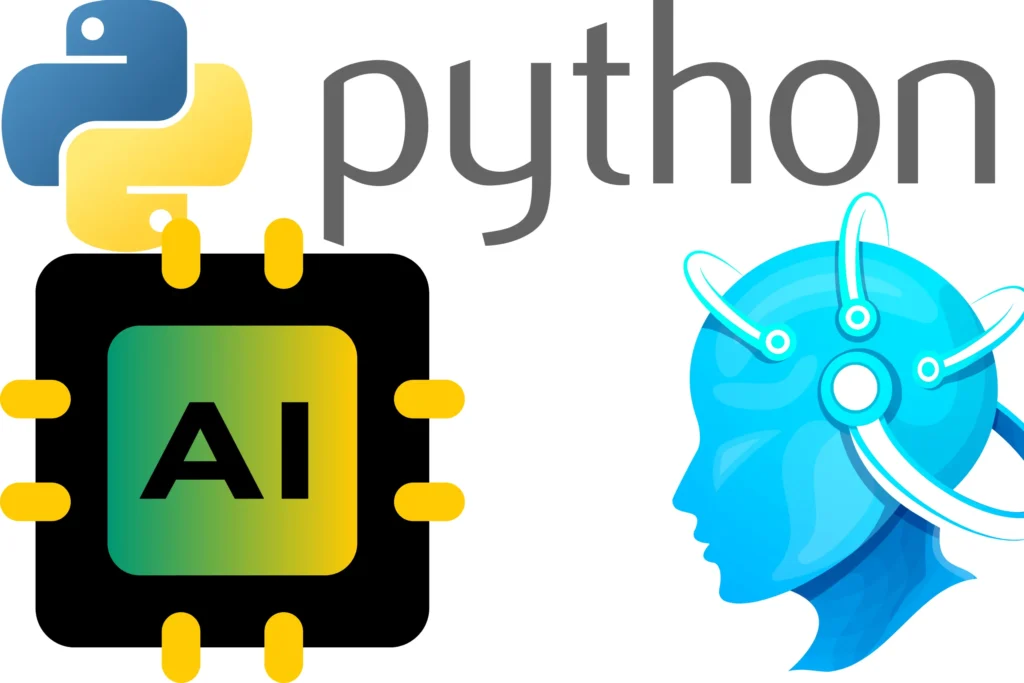Python for AI

AI initiatives are distinct from regular software development projects. They vary in the technology stack, the talents necessary for an artificial intelligence (AI)-based project, and the requirement of doing extensive research. You should select a programming language that is robust, adaptable, and has a wide range of tools accessible to you to realize your AI ambitions. Python provides all of this, which is why we are seeing an increase in the number of Python for AI projects today.
Python helps developers be more productive and confident in the software they’re producing at every stage, from development through implementation and maintenance. Python’s advantages over other programming languages for machine learning and Python for AI projects include:
- Its simplicity and consistency.
- Access to excellent libraries and frameworks for AI and machine learning (ML).
- Flexibility.
- Platform independence.
- A large and active community.
These factors contribute to the language’s overall appeal.
Straightforward and consistent

Python is known for producing code that is concise and understandable. While complicated algorithms and flexible processes power machine learning and artificial intelligence, Python’s simplicity enable developers to create dependable systems. Developers can devote all of their time and energy to addressing a machine learning challenge rather than worrying about the technical details of the language.
Aside from that, Python is attractive to many developers since it is simple to learn. Python code is easily comprehendible by humans, making it simpler to develop models for machine-learning applications. According to many programmers, Python is more straightforward to learn than other programming languages. Others point out the many frameworks, libraries, and extensions available to make certain functionality easier to implement.
Python is often considered to be a viable programming language for collaborative implementation when numerous developers are engaged. Python is a general-purpose programming language that can do a variety of difficult machine-learning tasks. It also allows you to construct prototypes rapidly, allowing you to test your product for machine-learning reasons before releasing it.
A large number of libraries and frameworks are available.

Implementing artificial intelligence and machine learning algorithms may be difficult and time-consuming. Developers must develop the greatest coding solutions if they are working in a well-organized and well-tested environment. Programmers use Python frameworks and libraries to decrease the amount of effort spent developing new code. A software library is a collection of pre-written code that programmers may use to do common programming tasks. With its wide technological stack, Python provides a large number of libraries for artificial intelligence and machine learning, which are particularly useful.
Independence from a certain platform

Programming languages and frameworks that are platform-independent enable programmers to create things on one system and utilize them on another machine with little or no modification. Python’s success may be attributed to the fact that it is a platform-independent language. Python is supported by a wide range of operating systems, including Linux, Windows, and Mac OS X. It is possible to develop standalone executable applications for most popular operating systems using Python code, which implies that Python software may be distributed and utilized on such operating systems even if they do not have a Python interpreter installed on their system.
Furthermore, developers often rely on cloud computing providers such as Google or Amazon for their computational requirements. On the other hand, companies and data scientists often employ their workstations, which are equipped with powerful Graphics Processing Units (GPUs), to train their machine learning models. Furthermore, the fact that Python is platform-agnostic makes this training much more affordable and convenient.
It has a great deal of adaptability.

What are the advantages of using Python for machine learning? Because it provides a tremendous deal of versatility. Python may be used in conjunction with another programming language to help developers accomplish their objectives. They don’t have to recompile the source code since it’s already done. Any modifications may be changed in real-time, which allows for quick viewing of the outcomes. Because of Python’s versatility, the likelihood of a problem developing is quite low.
It has a wide range of applications.

Testing is an integral element of the software development process. Python for machine learning can operate on almost any platform, including Windows, macOS, Linux, Unix, and a slew of other operating systems. Read on to discover more! What is the significance of this? The fact that you can run tests on whatever platform you choose makes testing a piece of cake for you. To prepare their code for running on other platforms, your developers need to utilize tools such as PyInstaller, which can be found here. Machine learning can be accomplished using Python, saving you a great deal of time and money.
It’s simple to understand.
Python is a simple language to understand, which means that any Python developer may quickly implement, duplicate, and distribute it anytime a modification in the code is necessary. The use of Python avoids misunderstanding, errors, and contradictory paradigms, which promotes the efficiency of algorithm exchange, idea sharing, and tool sharing between AI and machine learning specialists and between AI and machine learning professionals in general. Additionally, there are tools like IPython that provide additional functionality such as testing, debugging, tab completion, and other similar functions. It enables the creation, execution, debugging, and interactive monitoring of several applications simultaneously.
The less cognitive cost for Developers

It also decreases the cognitive cost on developers, allowing them to focus their mental resources on problem-solving and attaining project objectives rather than on the development process itself. Finally, the straightforward syntax makes it simpler to cooperate with other developers and move projects between them. The Python programming language also has a huge and active community of developers who are always willing to lend a helping hand and provide assistance, which may be useful when dealing with difficult projects.
Conclusion

Use of Python for AI
To summarise, artificial intelligence has a significant impact on the world in which we live, with new applications being developed all the time. Smart developers are increasingly turning to Python as their preferred programming language because of the many advantages it offers, which make it especially well-suited for machine learning and deep learning applications.
With Python’s broad variety of machine learning-specific tools and frameworks, developers may streamline the development process and save development time significantly. Python’s straightforward syntax and readability enable it to be used for quick testing of sophisticated algorithms while also making it accessible to those who are not programmers. While other programming languages may be utilized in artificial intelligence projects, there is no denying that Python is at the forefront of the field and should be given serious attention. This is why you should strongly consider using Python for AI project.




